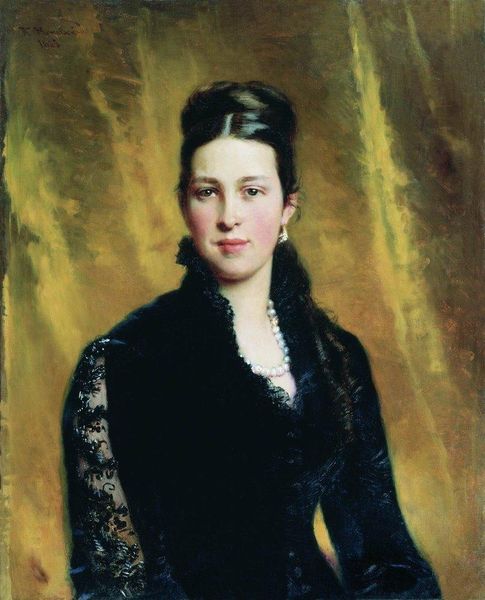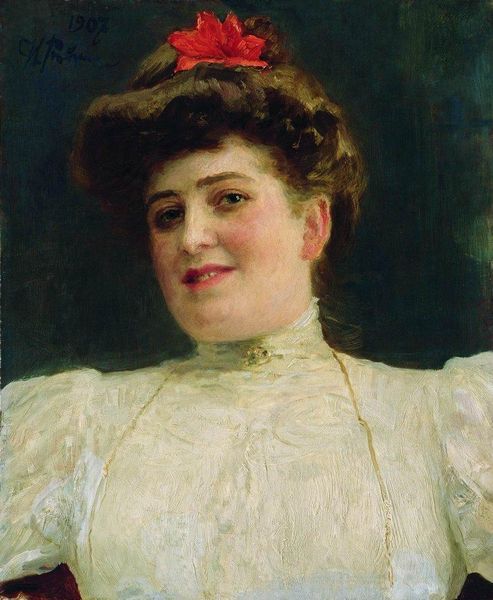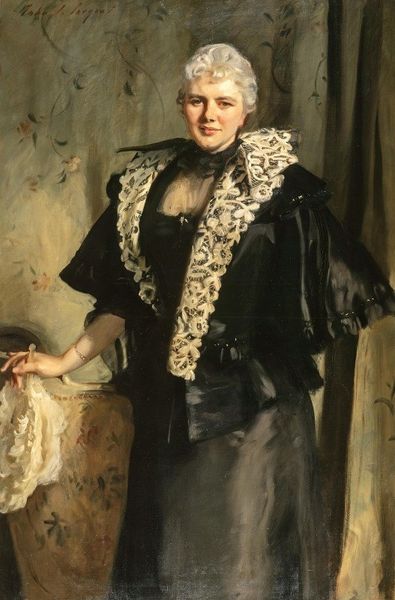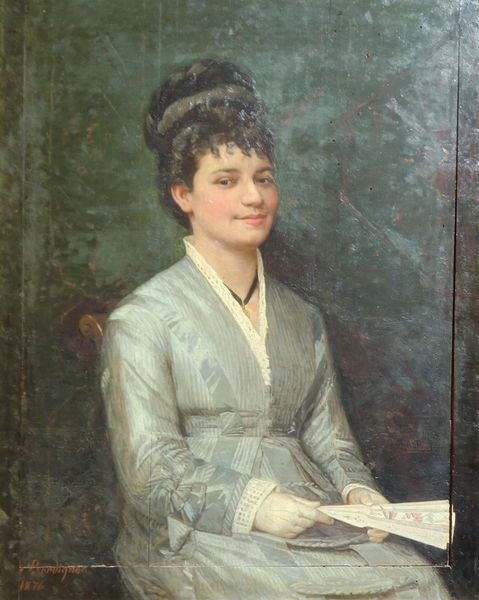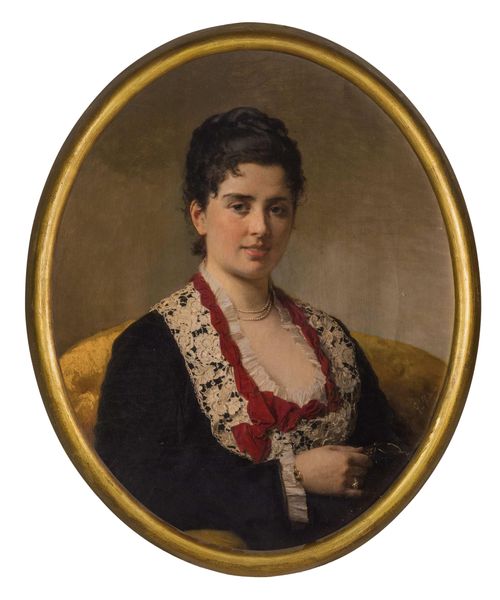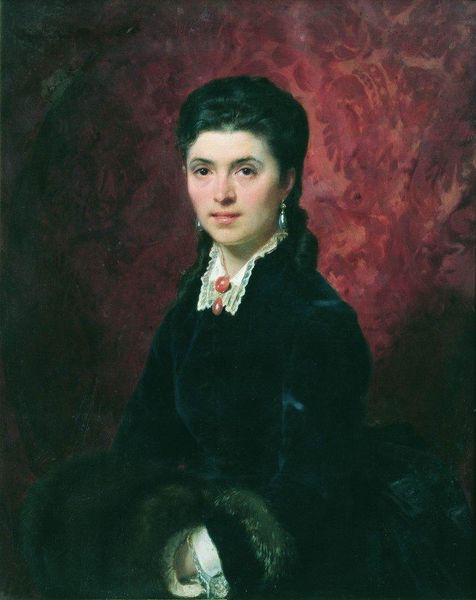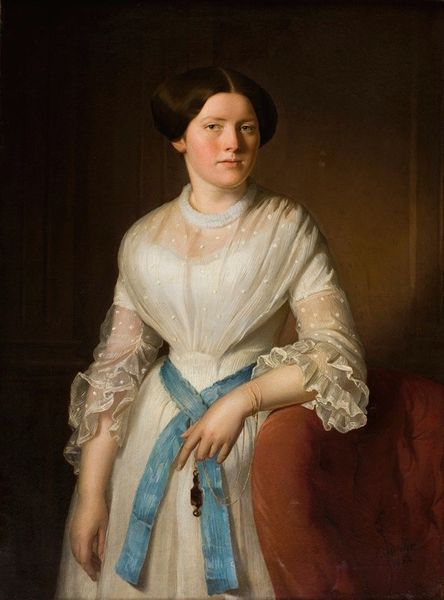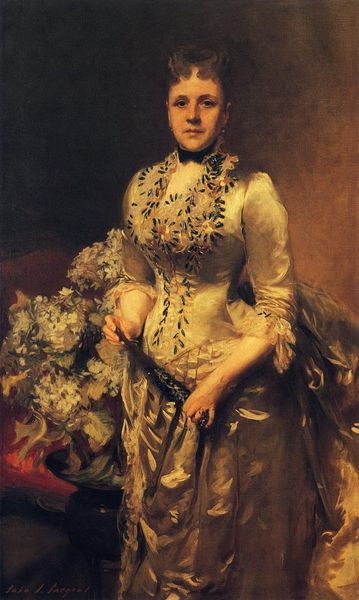
Copyright: Public domain
Curator: Here we see Ilya Repin's "Portrait of the Singer Alexandra Molas," completed in 1883, rendered in oil paint. A stunning depiction of a performer holding her sheet music. Editor: There’s a captivating serenity to this image, don’t you think? The brushstrokes around her seem quite energetic, almost like a controlled flurry, emphasizing the tactile quality of the fabric, lace, and even the paper in her hands. Curator: Indeed. Repin masterfully uses oil to give life to these materials, doesn't he? Considering its time, one might view it within a lineage of Russian portraiture but, more importantly, what do we know about Molas’ position in the artistic circles of late 19th century Russia? Did her patronage, or lack thereof, shape Repin's artistic decisions? Editor: Good questions. I'd note Repin was deeply concerned with representing the realities of Russian life, particularly during periods of reform. The context here might revolve around how artists like Molas, a professional woman, navigated their careers within those societal changes. The presentation, down to the details of dress and expression, could signal aspects of her social status and cultural influence. Curator: It is fascinating how seemingly simple materials — canvas, pigment, a musical score — intersect with the intricate social fabric of the time. One considers the labor behind such intricate lace trim, how her garments tell a story about production and consumption in Russia’s evolving economy. Editor: And how her being captured in paint contributes to a public dialogue around talent and celebrity. Consider too where this was shown; was it publicly accessible, privately commissioned? That heavily influenced reception. The roses, also, hint towards the theater, maybe hinting towards the flower's coded role within performance and social interaction. Curator: The subtle tensions and harmonies are incredible when one examines how material culture mirrors a wider political and social discourse, and then that the artwork can in turn shape these debates is so complex. Editor: It invites us to reflect not just on Molas' image, but also on the conditions that allowed that image to exist, to resonate. Curator: Ultimately, "Portrait of the Singer Alexandra Molas" provides a powerful lens through which we may consider the complex intersection of art, identity, and history. Editor: It is clear it gives insights into cultural values. And perhaps it also questions who is remembered and on what terms.
Comments
No comments
Be the first to comment and join the conversation on the ultimate creative platform.
